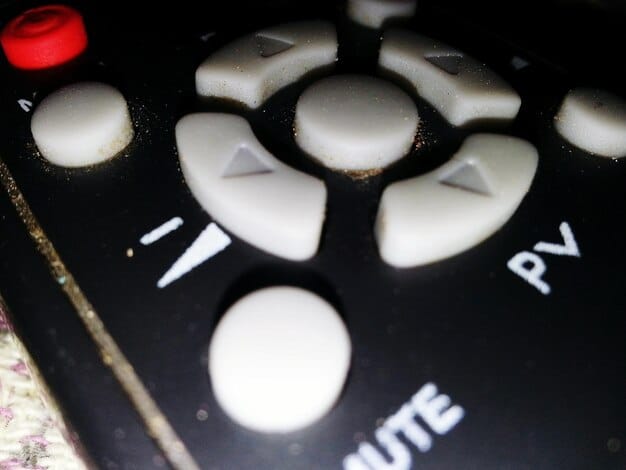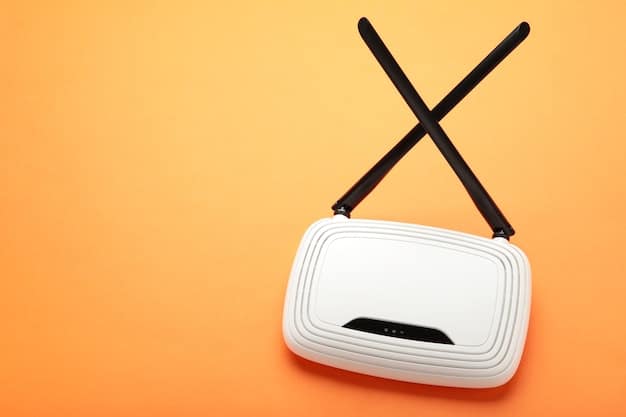Maximize Your Streaming: Top Tips for Picture and Sound Quality

Maximize Your Streaming Experience: Insider Tips for Better Picture and Sound Quality by adjusting video resolution, audio settings, and network optimization to achieve an immersive home entertainment setup.
Want to elevate your movie nights or binge-watching sessions? You can Maximize Your Streaming Experience: Insider Tips for Better Picture and Sound Quality aren’t just for tech experts; with a few tweaks, anyone can transform their viewing experience. Read on to discover how to unlock crystal-clear visuals and immersive audio from your favorite streaming services.
Understanding Your Streaming Setup
Before diving into specific tips, it’s essential to understand the components of your streaming setup. This includes your streaming device, TV, sound system, and internet connection. Each element plays a vital role in delivering the best possible picture and sound quality.
Identifying Limitations
Begin by identifying any limitations in your current setup. Is your TV capable of displaying 4K resolution? Does your sound system support Dolby Atmos? Understanding these limitations will help you focus on improvements that will make the most significant impact.
- Check your TV’s specifications: Look for its maximum resolution, HDR support, and refresh rate.
- Assess your sound system: Determine if it supports surround sound formats like Dolby Atmos or DTS:X.
- Evaluate your internet speed: Ensure you have sufficient bandwidth to stream high-quality video without buffering.
Device Capabilities
Different streaming devices have varying capabilities. Some devices may offer better video processing or audio decoding than others. Research your device’s specifications to understand its strengths and weaknesses.

Optimizing your streaming setup starts with knowing what each component can handle. By understanding the capabilities and limitations of your devices, you can make informed decisions on how to improve your viewing experience.
Optimizing Video Resolution for Crystal-Clear Picture
Video resolution is a key factor in picture quality. Streaming services typically offer different resolution options, ranging from standard definition (SD) to ultra-high definition (UHD) or 4K. Choosing the right resolution can significantly enhance your viewing experience.
Understanding Resolution Options
Learn about the different resolution options available on your streaming service. Higher resolutions like 4K provide sharper images and more detail, but they also require more bandwidth. Adjusting the resolution to match your internet speed and TV capabilities is crucial.
Adjusting your streaming service to utilize higher resolution is something that will vastly increase the quality of viewing. Not only will the image be sharper with more detail, but you can immerse yourself in the world of the film.
Adjusting Streaming Settings
Most streaming services allow you to adjust video quality settings. Look for options like “Auto,” “High,” “Medium,” and “Low.” Selecting “Auto” allows the service to adjust the resolution based on your internet speed, while “High” provides the best possible quality.
- Netflix: Go to Account > Playback Settings > Data Usage per Screen.
- Amazon Prime Video: Go to Settings > Stream & Download > Streaming Quality.
- Disney+: Go to App Settings > Video Quality.
Adjusting the settings might take a little bit of time, but once done, you can enjoy your films in the best way you possibly can. A small change can drastically improve the viewing quality.
Fine-Tuning Audio Settings for Immersive Sound
Audio quality is just as important as video quality. The right audio settings can create a more immersive and engaging viewing experience. Understanding your sound system’s capabilities and adjusting the audio settings on your streaming device can make a significant difference.
Choosing the Right Audio Format
Different streaming services offer various audio formats, such as stereo, 5.1 surround sound, and Dolby Atmos. Select the format that best matches your sound system. If you have a surround sound system, enabling 5.1 or Dolby Atmos will create a more immersive experience.
Adjusting Audio Output
Check your streaming device’s audio output settings. Ensure that the device is outputting the correct audio format for your sound system. Some devices may require you to manually select the audio output format.
The correct audio format might depend on what you are watching. If it is a film or show which utilizes surround sound, then a similar matching output will make the viewing experience better than ever.
Optimizing Your Network for Smooth Streaming
A stable and fast internet connection is essential for smooth streaming. Buffering and interruptions can ruin your viewing experience. Optimizing your network can help ensure a consistent and high-quality stream.
Improving Wi-Fi Signal
A weak Wi-Fi signal can cause buffering and reduced video quality. Try moving your streaming device closer to your router or using a Wi-Fi extender to improve the signal strength. A wired connection is often more reliable if possible.
Prioritizing Streaming Traffic
Some routers allow you to prioritize network traffic. This can ensure that your streaming device receives sufficient bandwidth, even when other devices are using the internet. Look for Quality of Service (QoS) settings in your router’s configuration.

An optimized network will help to remove buffering and keep your streaming service at top quality. Not only will it benefit film and TV viewing, but will also help other devices that are connected to the internet
Calibrating Your TV for Optimal Picture Quality
Many TVs come with default picture settings that are not optimized for streaming. Calibrating your TV can significantly improve picture quality, making colors more accurate and details more visible.
Adjusting Picture Modes
Experiment with different picture modes, such as “Movie,” “Sports,” and “Game.” These modes adjust various settings like contrast, brightness, and sharpness to suit different types of content. The “Movie” mode is often the most accurate for watching films and TV shows.
Using Calibration Tools
Consider using calibration tools like THX Optimizer or Spears & Munsil HD Benchmark to fine-tune your TV’s settings. These tools provide test patterns that help you adjust brightness, contrast, color, and sharpness for the most accurate picture.
Calibrating your television will help unlock the best video quality possible for your TV. Not only can this help improve the resolution quality, but can also bring a different feel to the film.
Troubleshooting Common Streaming Issues
Even with the best setup, you may encounter streaming issues. Understanding common problems and how to troubleshoot them can help you quickly resolve issues and get back to enjoying your favorite content.
Buffering and Interruptions
Buffering is often caused by a slow internet connection. Try restarting your router and modem. If the problem persists, contact your internet service provider.
Audio and Video Sync Problems
If the audio and video are out of sync, try restarting your streaming device and TV. Check the audio settings on both devices to ensure they are properly configured.
Making note of common issues is always a good idea when dealing with streaming. Just making sure you know what to do in these situations can solve the problem immediately.
| Key Point | Brief Description |
|---|---|
| 📺 Video Resolution | Adjust to 4K or optimal setting. |
| 🔊 Audio Settings | Match audio to your sound system. |
| 📶 Network Optimization | Improve Wi-Fi or use wired connection. |
| 🎨 TV Calibration | Fine-tune picture modes for best quality. |
FAQ
▼
You can use online speed test tools like Speedtest.net to check your internet upload and download speeds. A speed of at least 25 Mbps is normally recommended for 4k streaming.
▼
Movie mode is generally best for streaming as it offers the most accurate color settings. Adjustments or calibrations may be required to get the picture perfect for your service.
▼
Go to the settings menu on your device and look for an option for “System Updates” or “Software Updates.” Follow the instructions to check for and install any available updates.
▼
Try restarting your router and modem. Also, ensure no other devices are taking up bandwidth and close unneccesary apps. If the problem continues, contact your service provider for a fix.
▼
Ensure that your streaming device and sound system are set up for surround sound. Check the audio settings on your streaming service to enable audio configurations like Dolby or DTS.
Conclusion
By implementing these insider tips, you can significantly maximize your streaming experience: insider tips for better picture and sound quality. From optimizing video resolution and audio settings to calibrating your TV and troubleshooting common issues, these steps will help you unlock the full potential of your home entertainment setup and enjoy a truly immersive viewing experience.





